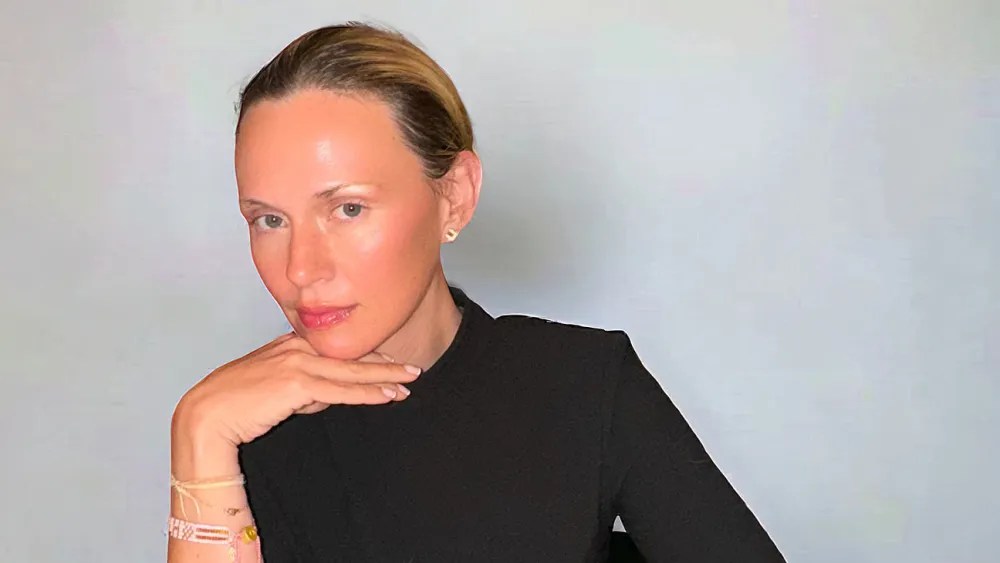“I think we must all agree,” the British photographer Yevonde declared in 1921 to the Professional Photographer’s Association in London, “photography without women would be a sorry business.”
With a focus on female representation, “Yevonde: Life and Color,” a vivid display of her idiosyncratic oeuvre at the city’s newly reopened National Portrait Gallery, argues for her role as a pioneer of color photography.
Born Yevonde Cumbers in South London in 1893, she was known professionally as Madame Yevonde, rarely by her married name (Mrs. Edgar Middleton). On her own terms, she used the singular Yevonde, with which she signed her prints, exhibition invitations and 1940 autobiography, “In Camera.”
After a succession of private schools in the home counties and a convent school in Belgium, Yevonde was sent to a finishing school in Paris. Though her teachers there dismissed an impassioned essay she wrote on Mary Wollstonecraft, Yevonde returned to England a convinced feminist in 1909, at the height of the women’s suffrage movement. After a stint marching, chalking sidewalks and selling papers for the Women’s Social and Political Union, Yevonde glimpsed potential career independence in the examples of two successful woman photographers, one of whom employed her as an apprentice.
In 1914, aged just 21, Yevonde opened a studio with the help of her father Frederick Cumbers, the co-founder of an ink manufacturer. (A love of color was perhaps her inheritance.) The young photographer quickly placed portraits of prominent figures, including royals, in the booming illustrated magazines of the time — the so-called “midweeklies”— including Sketch and Tatler.
Yevonde’s career continued unabated until her death in 1975. The subjects of her pictures are a veritable panoply of Britain’s who’s who — if you can keep track of surnames and titles endlessly shifted by scandal, divorce and remarriage. Hung chronologically, portraits of suffragettes, socialites, sportswomen, sovereigns and celebrities move quickly from tentative investigations in black-and-white to theatrical studies in the saturated hues that became Yevonde’s hallmark.
When Vivex — the first color process available to professional photographers in Britain — arrived in 1931, a spokesman described it as “the bad boy of the photographic family.” In (typically male) spheres of fine art photography, color was disdained as a distracting stunt. For Yevonde, who immediately began using the method to produce rich natural colors, it was an uncharted world of experiment: “Red hair, uniforms, exquisite complexions and colored fingernails came into their own,” she later reflected in her memoir. “Hurrah! We were in for exciting times!,” she wrote. “No history, no tradition, no old masters, but only a future!”
This new realm of visual possibility was also, she said, particularly apt for women practitioners, given their familiarity with makeup, fashion and interior design. “Let’s have a riot of color,” she demanded, as if domestic tradition might yield bold new frontiers. “None of your wishy-washy hand-tinted effects.”
The next year, Yevonde held the first British exhibition of color portraits.
Her photographs of the 1930s dazzle with crimson: The film star Vivien Leigh appears in two-thirds profile against a glinting red backdrop that intensifies her rosebud lips; the sports car driver and aviator Jill Scott pops in head-to-toe cherry red against a pale background; “LONDON CHEMIST’S S.O.S.” a tabloid headline screams behind two newspaper sellers with red lips and tawny hair.
A darker palette and vision emerges in Yevonde’s most famous series, “Goddesses and Others,” from 1935. These 26 photographs — some seen here for the first time in new archival prints made by the National Portrait Gallery, which recently acquired 2,000 of Yevonde’s color separation plates — are fantastical studies of women aged 15 to 40, dressed as mythological characters. Already known for her elaborate use of props, painted and fabric backgrounds, dramatic lighting and colored filters, here Yevonde elevated artifice and performative mise-en-scène to new, dreamlike ends.
Margaret Sweeny, purportedly the most photographed woman of her time (later renowned as the “Dirty Duchess” of Argyll), appears as Helen of Troy, her porcelain complexion and dark marcelled bob shrouded in a gauzy blue veil. Lady Dorothy Campbell is Niobe weeping for her slain sons, her tightly framed face shining with glycerin tears — a nod to Man Ray’s surrealist “Larmes” of a few years earlier. Sheila Milbanke, one of Evelyn Waugh’s “bright young things” (later a Russian princess), is the ill-fated Amazonian Queen Penthesilea: Scantily clad in leopard skin, head thrown back, her brightly lit throat is pierced by Achilles’s arrow.
While critics of the time, and after, derided the “Goddesses” as garish and unserious — they were “posh decadence,” one wrote — but given the portraits’ vibrant compositions and risqué interpretation of female identity, they belong with those of Yevonde’s more lauded male contemporaries, Cecil Beaton and Angus McBean.
Color printing ceased during World War II, and Yevonde returned to more conventional black-and-white portraiture. Her later playful photomontages and solarized portraits (including one of young Judi Dench) are not the strongest works. They affirm, however, that Yevonde’s photography studio remained a place of artful experiment and financial freedom — a room of her own.
Yevonde: Life and Color
Through Oct. 15 at the National Portrait Gallery, in London; npg.org.uk.



